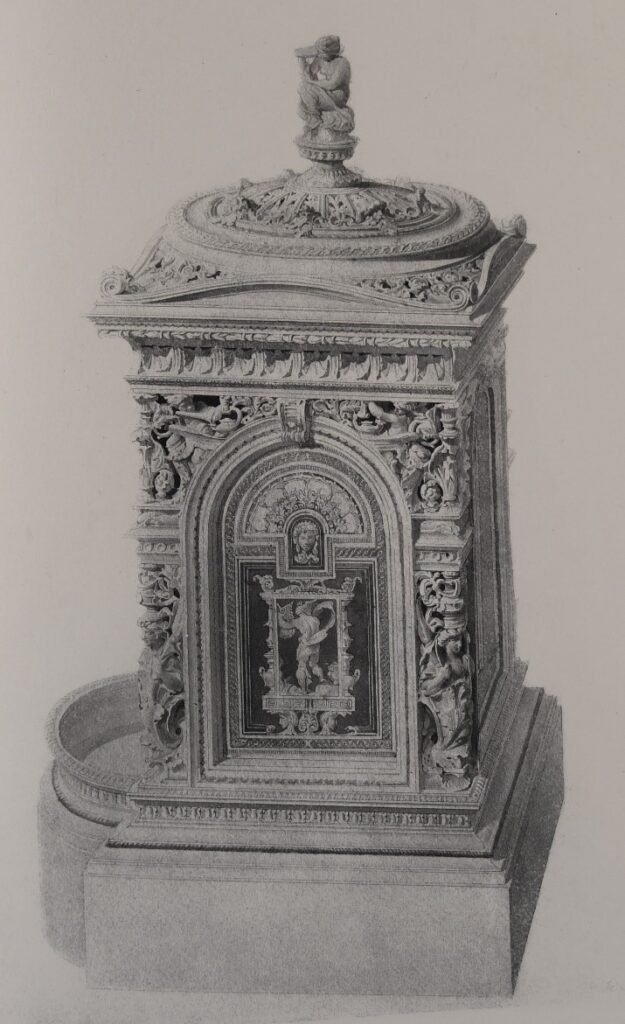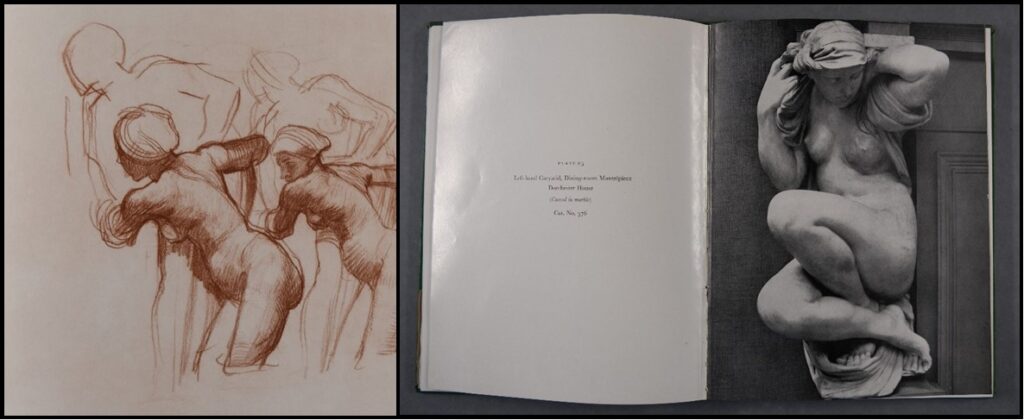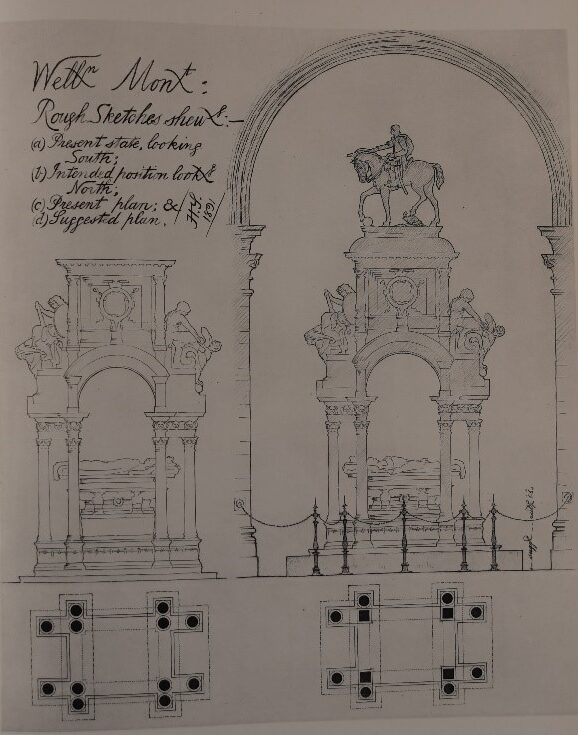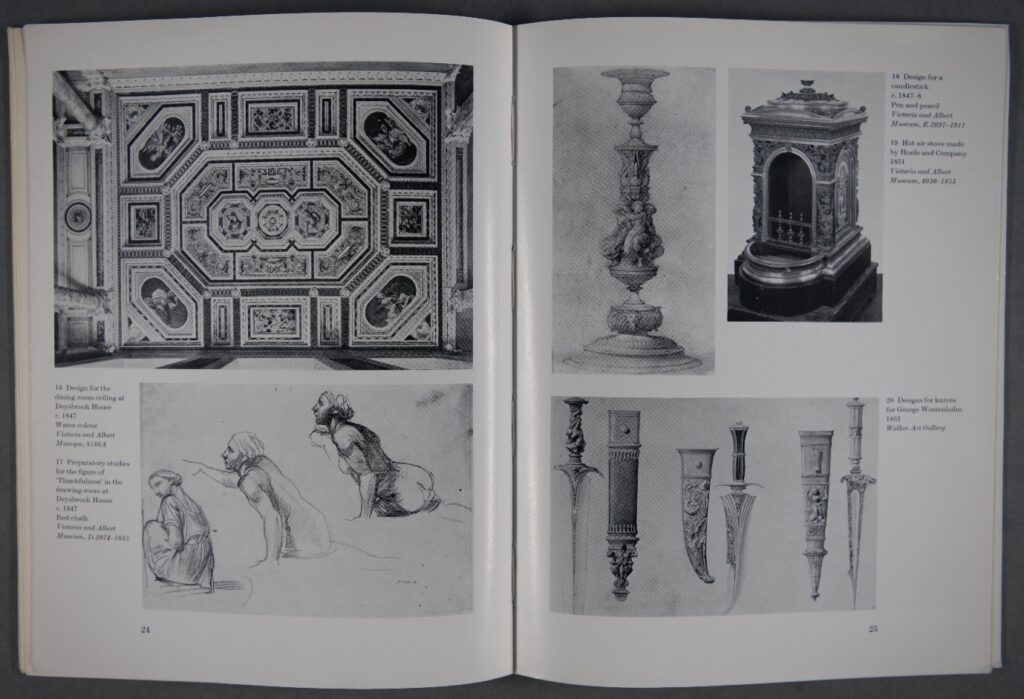This is the second part of a look at the life of Alfred Stevens. If you missed the first part, you can catch-up here!
—
After nine years of travelling and studying under the great Italian masters Alfred returned to Blandford in 1842. For a while he helped his father George with his decorating business including the ornamentation at Chettle House near Blandford.
In 1844 he moved to London to take up a teaching post at the ‘Government School of Design in Architecture, Perspective and Modelling’ with a bit of, ‘painting and ornamentation as required’, or as he told his old friend from Blandford, Alfred Pegler, ‘I was offered a place…as the Professor of everything’. He was beginning to get a name for himself and was offered several large commissions while he was here.
The impact of the industrial revolution on the design of everyday objects was becoming apparent to government authorities and artists alike. More and more colleges and institutions were being opened to accommodate this. Alfred’s humble background in Blandford helping his father, together with his natural talent and skill learnt in Italy gave him the perfect background for the post. He rejected contemporary distinctions between fine art and design stating:
“I know but of one art”
One of Steven’s former students, Young Mitchell, art master of Sheffield School of Art, introduced him to Henry Hoole and in 1850 he moved up to Sheffield to become Head Designer at Hoole & Co. The Green Lane Foundry specialised in making ornamental stoves, grates and fenders in bronze and metal. He arrived when they were preparing for the Great Exhibition of 1851 and Henry Hoole was very keen to enter some examples of their work. Here Alfred produced several award-winning pieces in metalwork, majolica and terracotta including the stove below.

Dorchester House (now the Dorchester Hotel) in Park Lane was designed for Sir Robert Holford who wished to have a grand mansion to display his extensive collection of paintings and Alfred was asked to design the grand fireplace in the dining room. He produced hundreds of drawings inspired by the style of the Italian high renaissance.

After Wellington’s death in 1852 the government announced a competition to design a monument to be erected in St Paul’s Cathedral. Stevens was awarded the commission and after many years of work, financial and administrative wrangling it was finally installed after his death in 1892. This monumental sculpture is possibly his most famous work. The two allegorical groups from this monument Truth and Falsehood and Valour and Cowardice inspired the New Sculpture movement. Life-sized models of these can be found in the Victoria and Albert museum.

Why Alfred Stevens is so unknown in his native county is a mystery. He designed and made everything from plates and knives, stoves and fireplaces through to huge monuments. He was also an accomplished painter and book illustrator. He worked tirelessly, often to the detriment of his health, and could be described as one of the early commercial artists.

—
As mentioned in part one, Alfred Stevens is the subject of one of the largest and heaviest books in the Local Studies collection. He is also the subject of one of the smallest. ‘The Mysterious Affair of the Lost Church Painting’ by Dudley Gaskill (1963) is a charming story about a beautiful painting of angels and cherubs on the ceiling of The Church of the Holy Rood, Shillingstone. While gardening in the old rectory in 1957 the narrator meets an elderly man who used to sing in the church as a boy and could remember playing in the rectory garden. He asks what happened to the painting on the ceiling of the nave. He says,
“It was the most marvellous painting, and it has gone.”
The narrator is most intrigued but he cannot find out any other information or anyone else that remembers it until the following year when he comes across another elderly ex-inhabitant, who recalls,
“There was a blue sky… most wonderful blue sky. It was painted on canvas… It covered the whole of the ceiling. There was one…two… three… four… cherubs on each wall at the edge of the canvas. They were carved in wood and they were painted […] Do you know? That blue was breathtaking… and that picture was most gorgeous… most gorgeous… far more beautiful than anything now in the church.”
Finally, the mystery of the painting on the church ceiling is resolved. The artist was Alfred Stevens. Said to be commissioned by the Rev. Dayman around 1842 when the 25 year old Alfred had returned to Blandford from Italy and was a penniless artist.
Examples of his work can be found, amongst others, in the Tate, the V&A, Walker Gallery Liverpool, RIBA archives, Museum of Wales, British Museum, Blandford Museum, Dorset County Museum and in books in the Local Studies Collection at Dorset History Centre.


Fascinating. What a wonderfully talented man he was. I shall be looking out for his work in the future.
Thank you for bringing Alfred to our/my attention. Someone who I would love to follow up and as you say ‘Why so unknown’ in Art History
Fascinating biography. I can really see the influence of the Italian Renaissance masters in his sketches. I want to see more of his work!
Thanks, i found this very helpful. Do you happen to know why Stevens only spent two-two and a half years in Sheffield? My guess would be he was not keen on the locale, or perhaps wanted to be based in London again.
Thank you for your comment Chris! Henry Hoole (who was the owner of Green Lane Works) was keen to exhibit examples of what they produced at the Great Exhibition of 1851, which was one of the reasons Stevens was employed as head designer in the foundry. Perhaps when the exhibition was over, he decided to move back to London to start work on preparations for the Wellington memorial and various other projects. From what is written about his stay in Sheffield it seems that he enjoyed his time there and “made many friends”. We have a few books about Alfred Stevens in our Local Studies collection including the huge tome, ‘Alfred Stevens and his Work’, by Hugh Stannus. You are welcome to visit and take a look at these for more information.